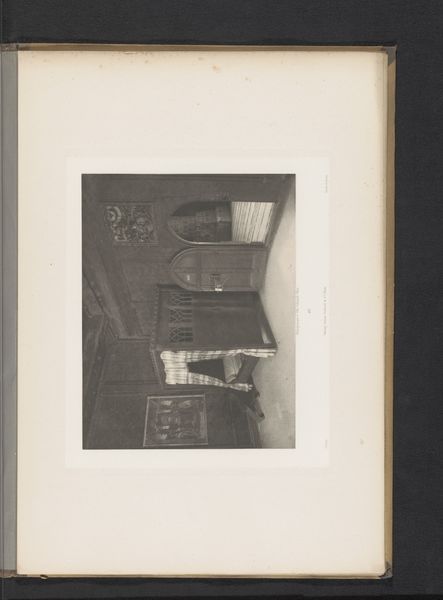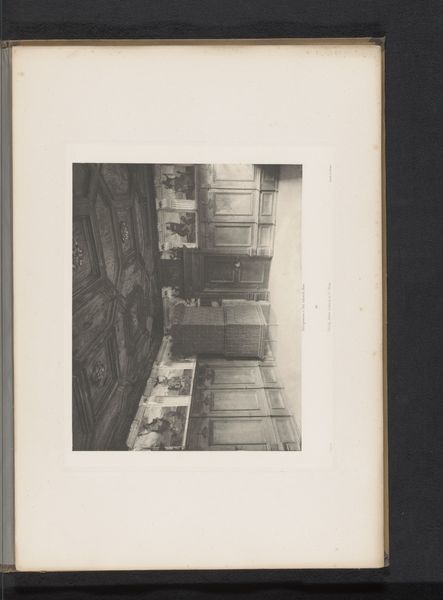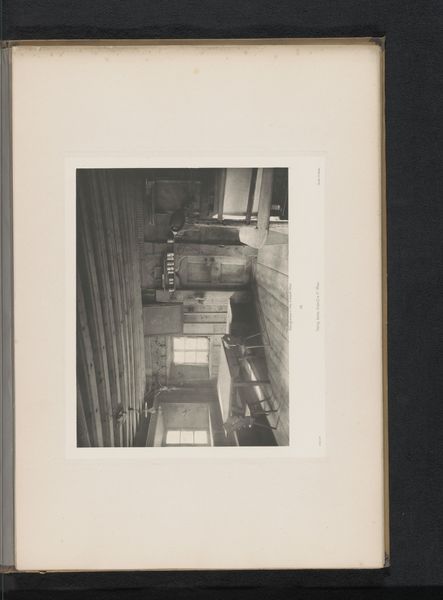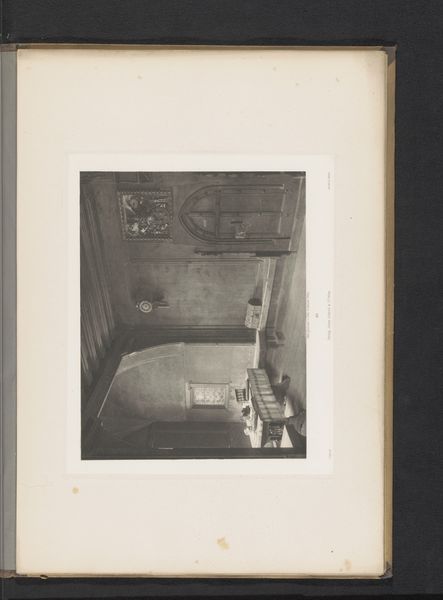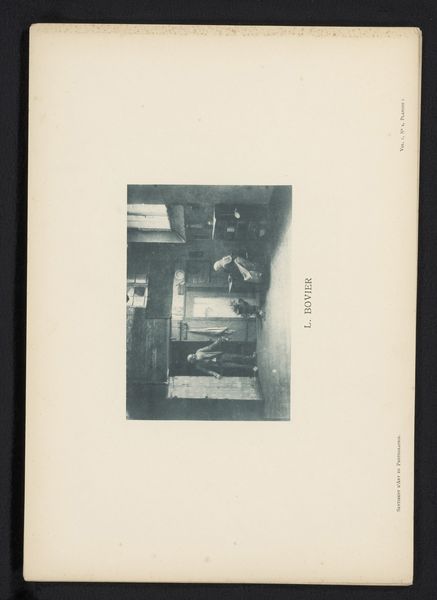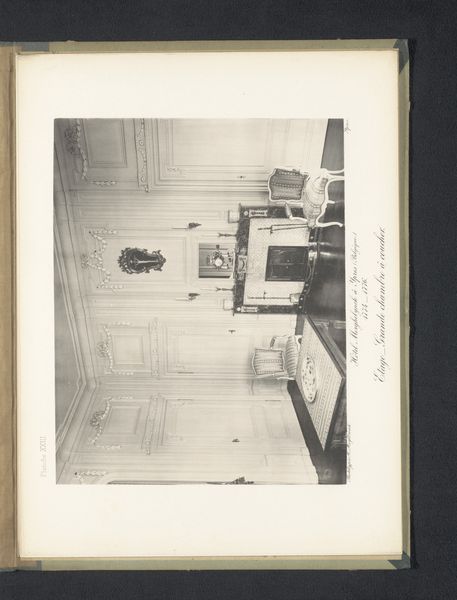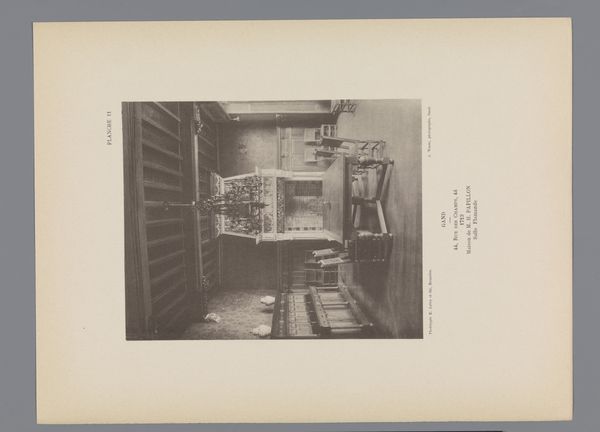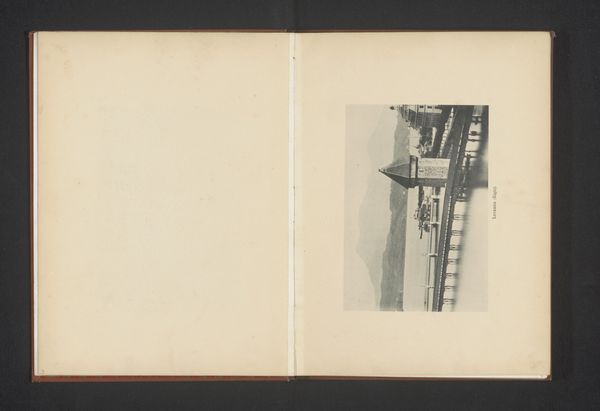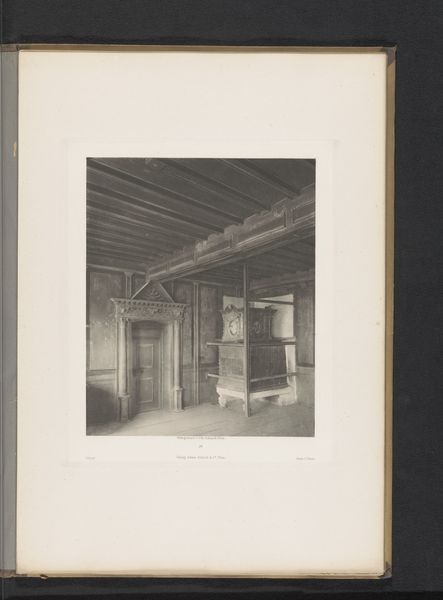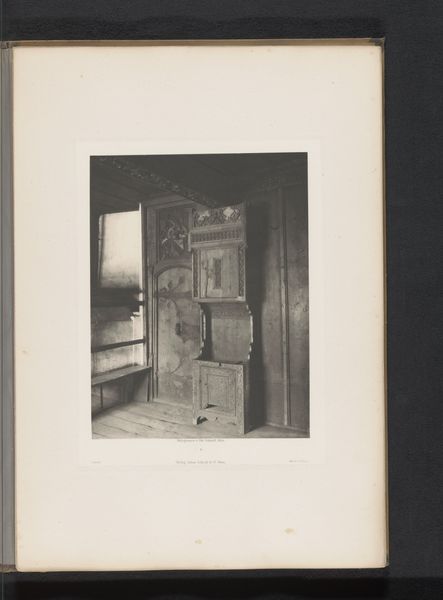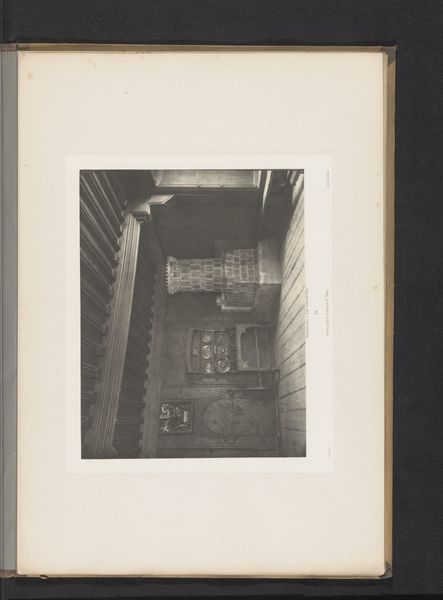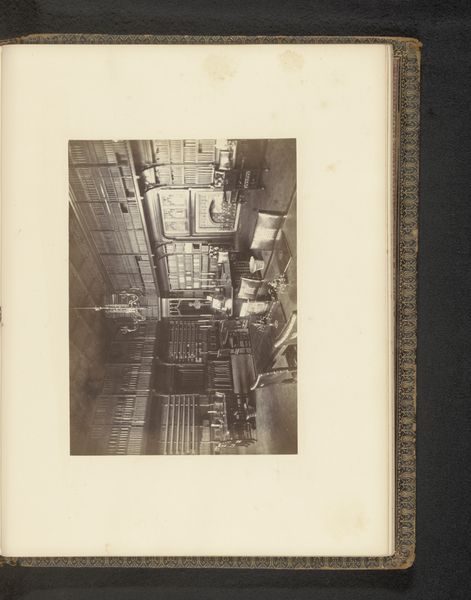
print, photography, gelatin-silver-print
#
portrait
#
still-life-photography
# print
#
landscape
#
photography
#
gelatin-silver-print
#
realism
Dimensions: height 184 mm, width 234 mm
Copyright: Rijks Museum: Open Domain
Curator: Looking at this gelatin silver print from before 1891 titled "Gezicht op de eetzaal van een woning in Klausen, Italië" by Otto Schmidt, I find myself intrigued by its historical context. The depiction of a dining room provides insight into the domestic life of the time. Editor: My immediate impression is the overwhelming use of wood. Everything from the walls to what I assume is the dining table and even smaller details within the room appears to be wood, almost consumed by its materiality. Curator: That’s an interesting observation. Realism, as an artistic movement, really pushed back to academic painting that focused on idealization. Schmidt’s image shows a room as it likely existed, reflecting the societal conditions, not the aspirational. The wood, certainly significant to the physical space, probably carries a value related to economic accessibility. Editor: Exactly. And the specific crafting of that wood raises material questions. Is it locally sourced? What were the labor conditions involved in the woodwork? I'm sure accessing those elements is not readily possible with the image alone, but raises critical inquiries. Also notice the composition; the narrow field of view and simple construction is stark when contrasted with the still life’s conventional associations with opulent display. Curator: Well, this contrast maybe purposeful to highlight realism versus materialism in the setting that showcases socio-political power of upper and middle-class homes in Italy. Also the angle, the framing could hint to photographic traditions from those years. The angle seems deliberate, possibly aiming to provide depth, showcase space limitations and create an intimate viewing experience. Editor: Indeed. These old photographic techniques draw consideration to labor practices and material choices available in those days that in some ways, dictated what type of compositions and imagery was created and available at the time. Curator: These subtle choices also played an influential role in constructing perceptions about a foreign lifestyle and spaces. Editor: All these perspectives highlight how photography, with its processes, materials, and the way images are socially consumed, shapes not just what we see but how we understand daily life. Curator: And that understanding has far reaching impacts in constructing our societal perception.
Comments
No comments
Be the first to comment and join the conversation on the ultimate creative platform.
